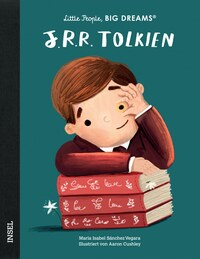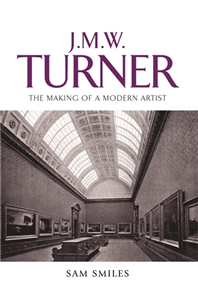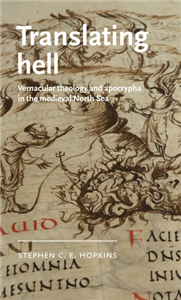Your Search Results
-
Promoted Content
-
Promoted ContentMay 2012
J. G. Fichte.
Leben und Lehre. Ein Beitrag zur Aktualisierung seines Denkens und Glaubens.
by Schröder-Amtrup, Karsten
-
 Trusted Partner
The ArtsMarch 2017
Trusted Partner
The ArtsMarch 2017Images of the army
The military in British art, 1815-1914
by J. W. M. Hichberger
In an age when engraving and photography were making artistic images available to a much wider public, artists were able to influence public attitudes more powerfully than ever before. This book examines works of art on military themes in relation to ruling-class ideologies about the army, war and the empire. The first part of the book is devoted to a chronological survey of battle painting, integrated with a study of contemporary military and political history. The chapters link the debate over the status and importance of battle painting to contemporary debates over the role of the army and its function at home and abroad. The second part discusses the intersection of ideologies about the army and military art, but is concerned with an examination of genre representations of soldiers. Another important theme which runs through the book is the relation of English to French military art. During the first eighty years of the period under review France was the cynosure of military artists, the school against which British critics measured their own, and the place from which innovations were imported and modified. In every generation after Waterloo battle painters visited France and often trained there. The book shows that military art, or the 'absence' of it, was one of the ways in which nationalist commentators articulated Britain's moral superiority. The final theme which underlies much of the book is the shifts which took place in the perception of heroes and hero-worship.
-
 Trusted Partner
November 2021
Trusted Partner
November 2021Poster Clemens J. Setz (A1)
plano, nicht gefaltet | Für Fans der Setz’schen Werke und seiner Person
by Clemens J. Setz
»Wer den Chor der Mäuse nicht hört, braucht nicht mit mir befreundet zu sein.« Clemens J. Setz ist der Autor bahnbrechender Romane wie Die Stunde zwischen Frau und Gitarre, aufregender Erzählungsbände wie Der Trost runder Dinge, von Gedichten, Theaterstücken, Drehbüchern, Nacherzählungen und Essays. Er ist Übersetzer, ein Freund der Plansprachen, des Obertongesanges, der Ziegen und der Hasen. Er ist Träger des Georg-Büchner-Preises, des Kleist-Preises, des Berliner Literaturpreises. Außerdem ist er ein Poet der Kurznachrichtendienste und noch einiges mehr. In seiner radikalen Vielfältigkeit und vielfältigen Radikalität ist er eine herausragende Figur der Gegenwartsliteratur. Für Fans der Setz’schen Werke und seiner Person ist dieses hochwertige Plakat mit einem Porträt des Dichters gedacht, aufgenommen vom Berliner Fotografen Max Zerrahn. Poster auf stabilem GalaxyArt-Papier im DIN-A1-Format
-
 Trusted Partner
March 2021
Trusted Partner
March 2021Übrig blieb ein moosgrüner Apfel
Gedichte und Prosa
by H. C. Artmann, Christian Thanhäuser, Clemens J. Setz
Magische Dinge geschehen in diesem Buch: Ein Schierling wird entgiftet, Küsse werden gegen Beeren getauscht, und der Farn redet mit Zungen. Und überall sprießen die Knospen, stehen die Blüten in voller Pracht und leuchten die Früchte. Es sind die schönsten Naturgedichte und Prosastücke H. C. Artmanns, die dieser Band versammelt. Und sie zeigen den österreichischen Dichter in seiner ganzen Poesie: als Sprachzauberer, der sich an den Traditionen bedient und aus fremden Sprachen und Dialekten schöpft, aber auch in klassischer, formvollendeter Sprache dichtet. Dass sein Zauber unvermindert fortwirkt, ist sich Clemens J. Setz beim Aufsagen der Verse und Zeilen sicher. Das zeigen aber auch die Holzschnitte von Christian Thanhäuser, die zu den Gedichten entstanden sind. Artmann, den Dichter, erleben wir hier als Artmann, den Botaniker.
-
 Trusted Partner
Trusted Partner
-
 Trusted Partner
Humanities & Social SciencesJanuary 2013
Trusted Partner
Humanities & Social SciencesJanuary 2013Christian Dualist Heresies in the Byzantine World, c. 650-c. 1450
by Janet Hamilton, Bernard Hamilton
Christian dualism originated in the reign of Constans II (641-68). It was a popular religion, which shared with orthodoxy an acceptance of scriptual authority and apostolic tradition and held a sacramental doctrine of salvation, but understood all these in a radically different way to the Orthodox Church. One of the differences was the strong part demonology played in the belief system. This text traces, through original sources, the origins of dualist Christianity throughout the Byzantine Empire, focusing on the Paulician movement in Armenia and Bogomilism in Bulgaria. It presents not only the theological texts, but puts the movements into their social and political context.
-
 Trusted Partner
Trusted Partner
-
 Trusted Partner
April 2023
Trusted Partner
April 2023J. R. R. Tolkien
Little People, Big Dreams. Deutsche Ausgabe | Kinderbuch ab 4 Jahre
by María Isabel Sánchez Vegara, Aaron Cushley, Silke Kleemann
Schon in der Schule hatte er ein Faible für alte Sprachen. Er lernte nicht nur Latein und Griechisch, sondern auch Alt- und Mittelenglisch. Und er malte Karten, auf denen er die Welt des Mittelalters wieder zum Leben erweckte. Später erfand der Professor für Sprachwissenschaft für seine Kinder fantastische Geschichten. Und so entstand die Welt der Hobbits, Elben, Zwerge und Zauberer - und die Saga vom »Herrn der Ringe«. Das Buch und seine Verfilmungen schlagen bis heute ein Millionenpublikum in Bann. Little People, Big Dreams erzählt von den beeindruckenden Lebensgeschichten großer Menschen: Jede dieser Persönlichkeiten, ob Philosophin, Forscherin oder Sportler, hat Unvorstellbares erreicht. Dabei begann alles, als sie noch klein waren: mit großen Träumen.
-
 Trusted Partner
The ArtsDecember 2007
Trusted Partner
The ArtsDecember 2007J. M. W. Turner
The making of a modern artist
by Sam Smiles, Alan Rutter
Alone of his contemporaries, J.M.W. Turner is commonly held to have prefigured modern painting, as signalled in the existence of The Turner Prize for contemporary art. Our celebration of his achievement is very different to what Victorian critics made of his art. This book shows how Turner was reinvented to become the artist we recognise today. On Turner's death in 1851 he was already known as an adventurous, even baffling, painter. But when the Court of Chancery decreed that the contents of his studio should be given to the nation, another side of his art was revealed that effected a wholescale change in his reputation. This book acts as a guide to the reactions of art writers and curators from the 1850s to the 1960s as they attempted to come to terms with his work. It documents how Turner was interpreted and how his work was displayed in Britain, in Europe and in North America, concentrating on the ways in which his artistic identity was manipulated by art writers, by curators at the Tate and by designers of exhibitions for the British Council and other bodies. ;
-
 Trusted Partner
March 2010
Trusted Partner
March 2010Onkel J.
Heimatkunde
by Andreas Maier
Seit seinem Debüterfolg mit dem Roman Wäldchestag im Jahr 2000 ist Andreas Maier häufig unterwegs, um aus seinen Romanen zu lesen. Nur daß er in den letzten ein, zwei Jahren meist, wenn er eingeladen war, auch immer wieder schon aus dem kommenden Onkel J. las. Jedesmal hatte er damit das Publikum im Handumdrehen auf seiner Seite. Umstandslos fand man sich angeschlossen an Maiers Welt aus Wetterau, Familie, Fußball, Apfelwein, aus Thomas Bernhard und dem Evangelium nach Matthäus, aus Ängsten, Kneipenfreuden und -nöten, eingepackt in absurde Vorkommnisse und komische Erlebnisse. Jede Kolumne beginnt mit einem »Neulich«-Satz, die erste so: »Neulich war ich in Berlin. Das wird jetzt niemand weiter ungewöhnlich finden, aber ich bin Hesse, und mir ging in Berlin ein Wunsch in Erfüllung.« Dennoch handelt es sich um alles andere als ein Kolumnenbuch. Vielmehr nimmt Onkel J. – im Übergang von den ersten vier Romanen zu Maiers Projekt »Ortsumgehung« – eine zentrale Stelle ein. »Alles gehört zusammen, und für alles ist das Kolumnenbuch der Kern.«
-
 Trusted Partner
Literature & Literary StudiesMay 2026
Trusted Partner
Literature & Literary StudiesMay 2026Translating hell
Vernacular theology and apocrypha in the medieval North Sea
by Stephen C. E. Hopkins
In the Middle Ages, hell was useful because it was vaguely defined. Canonical scriptures scarcely mention hell, leaving much to the imaginations of early Christians, who used it to sort out who belonged within the faith. This book explores how hell became a place for literary experiments with local challenges in theology and identity. Following the reception and transformations of two popular hell apocrypha, it argues that they served as this role because of their liminal textual authority. As noncanonical scriptures, apocrypha afforded medieval writers space to revise their hells (since they were not actually scripture), while also encouraging readers to revere those experiments as valid (since they seemed like scripture). The book brings together adaptations from early medieval England, Iceland, Ireland, and Wales, placing the early vernacular theologies of the North Sea in comparative conversation.
-
 Trusted Partner
Trusted Partner
-
 Trusted Partner
Trusted Partner
-
 Trusted Partner
January 1987
Trusted Partner
January 1987300 Jahre "Nova Methodus" von G. W. Leibniz (1684-1984)
Symposion der Leibniz-Gesellschaft im Congresscentrum "Leewenhorst" in Nordwijkerhout (Niederlande), 28. bis 30. August 1984
by Herausgegeben von Heinekamp, Albert
-
 Trusted Partner
Humanities & Social SciencesJanuary 2020
Trusted Partner
Humanities & Social SciencesJanuary 2020The life–cycle in Western Europe, c.1300–c.1500
by S. H. Rigby, Deborah Youngs
This is the first study to examine the entire life cycle in the Middle Ages. Drawing on a wide range of secondary and primary material, the book explores the timing and experiences of infancy, childhood, adolescence and youth, adulthood, old age and, finally, death. It discusses attitudes towards ageing, rites of passage, age stereotypes in operation, and the means by which age was used as a form of social control, compelling individuals to work, govern, marry and pay taxes. The wide scope of the study allows contrasts and comparisons to be made across gender, social status and geographical location. It considers whether men and women experienced the ageing process in the same way, and examines the differences that can be discerned between northern and southern Europe. The fourteenth and fifteenth centuries suffered famine, warfare, plague and population collapse. This fascinating consideration of the life cycle adds a new dimension to the debate over continuity and change in a period of social and demographic upheaval.
-
 Trusted Partner
Trusted Partner
-
 Trusted Partner
December 1983
Trusted Partner
December 1983Wilhelm Meisters theatralische Sendung
by Johann Wolfgang Goethe, Wilhelm Voßkamp
Johann Wolfgang Goethe, am 28. August 1749 in Frankfurt am Main geboren, absolvierte ein Jurastudium und trat dann in den Regierungsdienst am Hof von Weimar ein. 1773 veröffentlichte er Götz von Berlichingen (anonym) und 1774 Die Leiden des jungen Werthers. Es folgte eine Vielzahl weiterer Veröffentlichungen, zu den berühmtesten zählen Italienische Reise (1816/1817), Wilhelm Meisters Lehrjahre (1798) und Faust (1808). Johann Wolfgang Goethe starb am 22. März 1832 in Weimar.
-
 Trusted Partner
March 1977
Trusted Partner
March 1977Auf dem Weg zum >historischen Kompromiß<
Ein Gespräch über Entwicklung und Programmatik der KPI. Aus dem Italienischen übersetzt von Sophie G. Alf
by Giorgio Napolitano, Eric J. Hobsbawm, Sophie G. Alf
Giorgio Napolitano, geboren 1925 in Neapel, war bis zum XIV. Parteitag (1975) verantwortlich für die Kulturabteilung der KPI, heute leitet er die Abteilung »Probleme der Arbeit«; seit 1963 gehört er dem Parteipräsidium und dem Sekretariat der KPI an. - Eric J. Hobsbawm, geboren 1917 in Alexandria, lehrt Soziologie am Birkbeck College der Londoner Universität. Er ist durch Veröffentlichungen zur europäischen Sozialgeschichte (Industrie und Empire 1 und 2. Britische Wirtschaftsgeschichte seit 1750, Frankfurt am Main 1969) hervorgetreten. Die jüngsten Wahlerfolge der Kommunistischen Partei Italiens (PCI) und die These vom »historischen Kompromiß«, von einem Regierungsbündnis zwischen Kommunisten und Bürgerlichen, haben die internationale politische Diskussion in den letzten Monaten erheblich beeinflußt. Gegner und Anhänger der neuen Strategie der KPI, in der die nationale Selbständigkeit der Partei in den Vordergrund gestellt ist, bekräftigen gleichermaßen nachdrücklich ihre Positionen: die einen hoffnungsvoll, die anderen warnend. In dieser Situation mag ein Dialog wie der zwischen dem englischen Sozialhistoriker Hobsbawm und dem Präsidiumsmitglied Napolitano Licht in die inneritalienische Entwicklung, insbesondere in das Programm und die politischen Grundvorstellungen der KPI bringen. Die Themen, um die das Gespräch sich dreht, sind: die Geschichte der Partei seit Togliattis Tod, die Begründung des neuen politischen Konzepts, die ökonomische Krise des Landes, die Aussichten für die Verwirklichung des Sozialismus in Italien, die Kulturpolitik, Einschätzungen der wirtschaftlichen Zusammenarbeit in Europa, die Erfahrungen der europäischen Arbeiterbewegung, die Strategie des »historischen Kompromisses«, Fragen der politischen Philosophie (Demokratie und Sozialismus).
-
 Trusted Partner
Trusted Partner

























